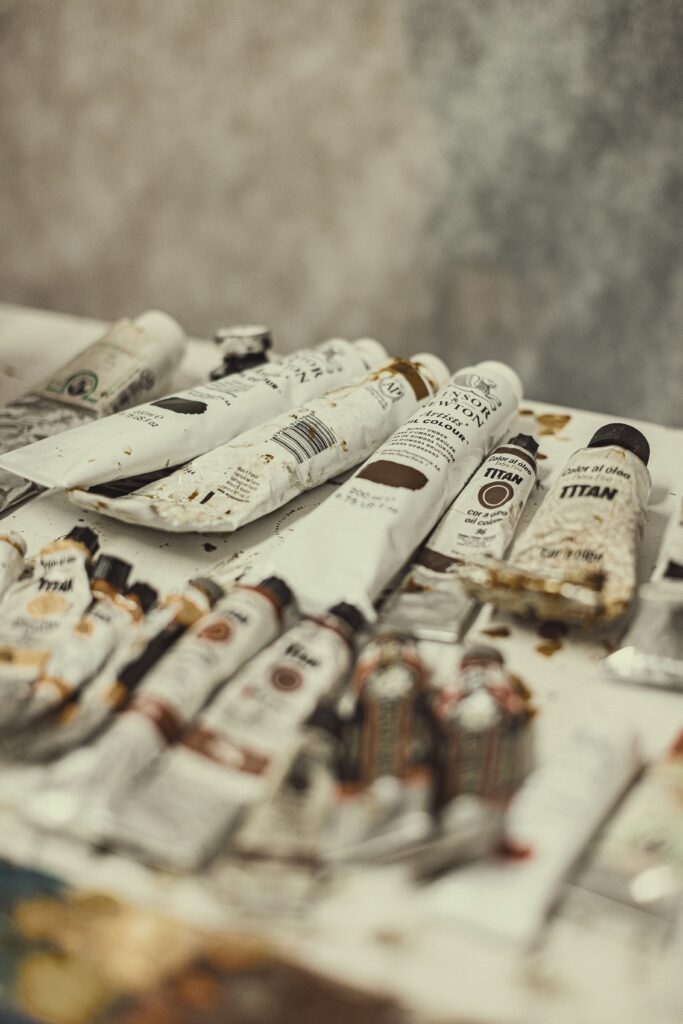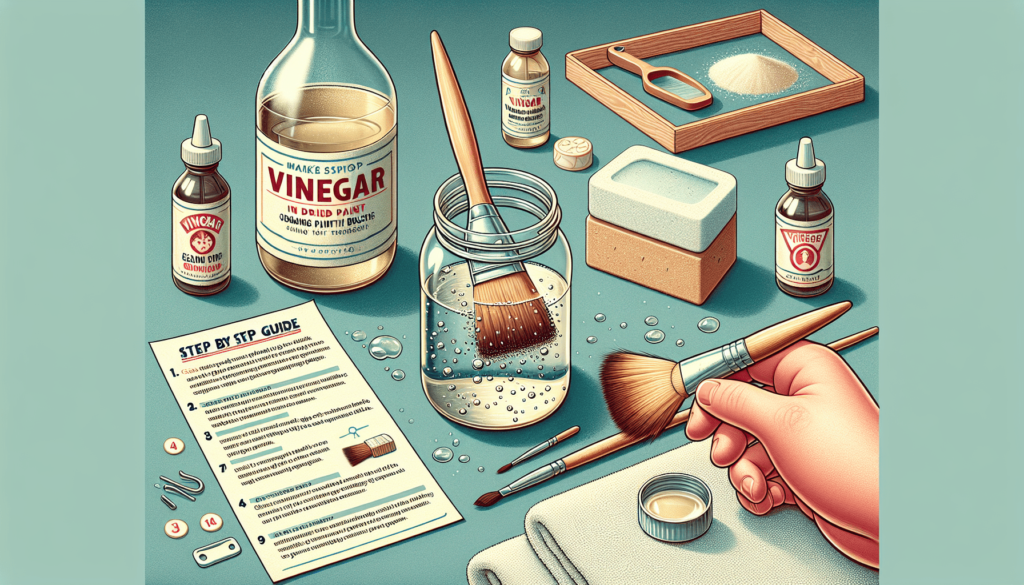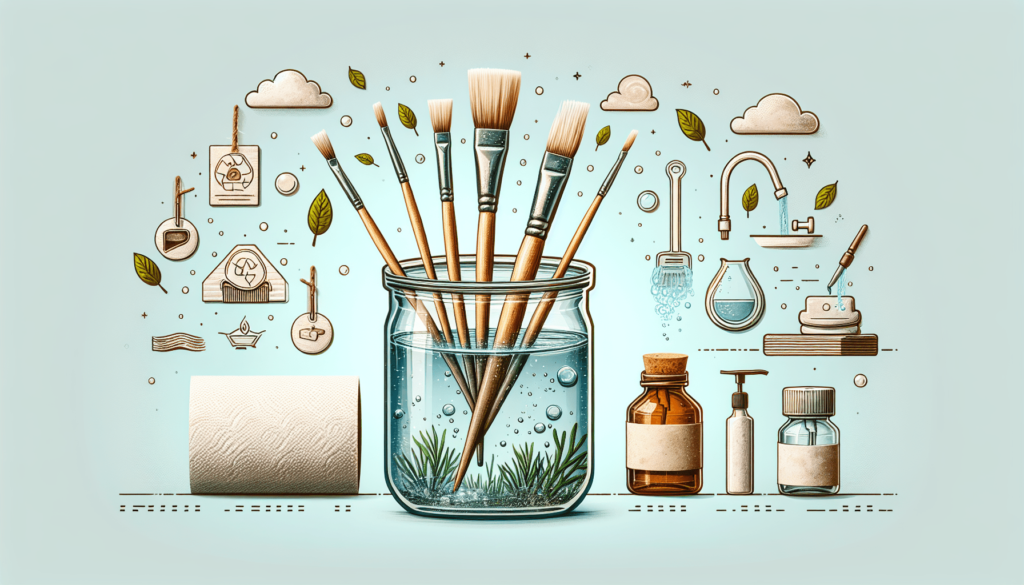In the realm of creative arts, maintaining the crisp condition of your paint brushes is crucial to ensure that your artistic journey continues without hitch. This article is tailor-made to guide you, presenting a step-by-step tutorial on how to clean dried paint brushes using a simple household ingredient – vinegar. Brushes caked with dried-on paint, which would otherwise be rendered useless, can be revived using this simple and eco-friendly approach. Embark on this read to save your paint brushes and in turn, your wallet.

Gather Materials
To begin the process of cleaning dried paint brushes with vinegar, there are a few essential materials that you will need to gather. Ensuring you have everything on hand before you begin will make the process smoother and more efficient.
Vinegar
The first material you need is vinegar. Vinegar acts as a natural solvent and can effectively dissolve the paint stuck on the brushes. Plain white vinegar is recommended, as it has a high acidity level that makes it incredibly effective for this task.
Warm Water
Warm water is crucial to this process. The heat helps to soften the dried paint, making it easier for the vinegar to dissolve it. Be sure that the water is not too hot, as this could damage the bristles on your paint brush.
Bucket or Container
A bucket or a sizeable container should be on your materials list. This container needs to be large enough to hold the brushes and the vinegar solution comfortably, allowing all the parts of the brush to be saturated effectively.
Soap or Dish Detergent
Soap or dish detergent is also needed. This will be used after soaking the brushes in the vinegar solution to help wash away any remaining paint residue and vinegar.
Old towel or Paper Towels
Finally, an old towel or paper towels are required for the drying process. These will absorb the excess water, helping your brushes to dry more quickly.
Prepare Vinegar Solution
Once you have gathered all necessary materials, the next step in cleaning your dried paint brushes with vinegar is to prepare the vinegar solution.
Fill a Bucket or Container with Warm Water
Choose your designated bucket or container and fill it with warm water. The water will serve as the base for your vinegar solution.
Add a Generous Amount of Vinegar to the Water
Next, add a generous amount of vinegar to the warm water. There’s no need to be precise about the amount; however, a good rule of thumb is to aim for a ratio of 1 part vinegar to 10 parts water.
Mix the Solution Well
Stir the mixture until the vinegar and warm water are thoroughly combined. Ensure that the vinegar has spread evenly throughout the water to create a consistent solution.
Soak the Brushes
With your vinegar solution prepared, it’s time to soak the brushes.
Place the Dried Paint Brushes into the Vinegar Solution
First, place your dried paint brushes into the vinegar solution. It’s best to put the brushes in bristle-first to ensure that the paint-stained areas get proper exposure to the solution.
Make Sure the Bristles are Completely Submerged
Check that the bristles are fully submerged in the vinegar solution. If any parts are exposed, the dried paint on that part will not be dissolved.
Allow the Brushes to Soak for at least 20 Minutes or Overnight
Now, allow the brushes to soak. If the paint is still quite fresh, 20 minutes to one hour should suffice. However, if the paint is older and more stubborn, it’s best to leave the brushes soaking overnight.
Remove Excess Paint
After soaking, it’s time to remove the dissolved paint from the brushes.
After Soaking, Remove the Brushes from the Solution
Carefully lift the brushes out of the vinegar solution. Be sure to handle them gently to avoid causing any damage to the bristles.
Gently Squeeze the Bristles to Remove any Excess Paint
Using a gentle hand, squeeze the bristles of the brushes to extricate the loosened paint. Start from the base of the bristles and move towards the tip to ensure you’re removing all the paint.
Repeat this Process if Necessary
If there’s still noticeable paint on the brushes after the first round, repeat the soaking and squeezing process.

Wash Brushes with Soap
After you’ve removed the excess paint, the next phase involves washing the brushes.
Fill a Sink or Container with Warm Water
Prepare another warm wash by filling a sink or another container with warm water.
Add a Small Amount of Soap or Dish Detergent
Add a bit of soap or dish detergent to the wash. The soap will aid in completely removing any residual paint and vinegar from the brushes.
Swirl the Brushes in the Soapy Water to Remove any Remaining Paint and Vinegar
Hold the brushes by their handles and swirl them around in the soapy water. This motion can dislodge any particles of paint or vinegar still clinging to the bristles.
Rinse the Brushes Thoroughly with Clean Water
Lastly, rinse the brushes under a stream of clean water. Make sure that all the soap has been washed off before moving to the next step.
Reshape the Bristles
After cleaning, the brushes must be appropriately reshaped before drying.
Use Your Fingers to Reshape the Bristles of the Brushes
Using your fingers, straighten and align each of the bristles on your brushes. This action ensures they will dry in the correct shape and prevent any future misapplication of paint.
Make Sure they are Straight and Aligned
Inspect the bristles to verify that they are indeed straight and lined up with each other. This careful check can ensure the brushes dry into their original shape, ready for future use.
Avoid Bending or Damaging the Bristles
To maintain the longevity of your brushes, avoid bending or otherwise damaging the bristles during this process. Be as gentle as you can to preserve the quality of the brushes for longer.

Dry the Brushes
With your brushes now clean and reshaped, it’s time to dry them.
Lay an Old Towel or Paper Towels on a Flat Surface
Find a flat surface and lay down an old towel or some paper towels. This set up will provide an absorbent spot for your brushes to dry.
Gently Squeeze the Bristles to Remove Excess Water
Just as you did to remove the paint, gently squeeze the bristles to expel the excess water. Start at the base of the bristles and move towards the tips, making sure all the water has been removed.
Lay the Brushes Flat on the Towel and Let them Air Dry Completely
Finally, place the brushes flat on the towel and allow them to air dry. Be sure the brushes have dried entirely before storing or using them again.
Condition the Brushes (optional)
If your brushes still feel stiff after cleaning, you may want to consider conditioning them.
If the Brushes still Feel Stiff after Cleaning, You Can Condition Them
Over time and multiple uses, brushes can lose their soft, pliable state. To restore them, you can use a conditioner to rejuvenate the bristles.
Apply a Small Amount of Hair Conditioner or Brush Cleaner to the Bristles
Add a small dollop of hair conditioner or specialized brush cleaner to the bristles. These products can help to soften and restore the flexibility of the bristles.
Work the Conditioner Through the Bristles with Your Fingers
With your fingers, work the conditioning product through the bristles. Make sure it is evenly distributed and entirely worked in.
Rinse the Brushes again and Let them Dry
Once the conditioner has been fully worked into the bristles, rinse the brushes under a stream of clean water. Afterward, set them back on the towel and again allow them to air dry.

Store the Brushes
When your brushes are clean and dry, it’s time to store them correctly for future use.
Once Dry, Store the Brushes in a Clean and Dry Area or a Brush Holder
Find a clean, dry area or a brush holder to store your brushes. The area should be free from any elements that could cause further damage or dirt to accrue on the brushes.
Avoid Storing Them in a Way That May Distort the Bristles
Ensure your storage method does not distort or bend the bristles. Any excess pressure on the brushes can disfigure them and make it harder to control the paint’s application.
Protect the Brushes from Dust or Damage
Protect your brushes from dust or other sources of damage while in storage. This measure will keep them in top condition and ready for your next painting project.
Regular Cleaning Maintenance
To ensure the longevity of your brushes, it’s essential to commit to regular cleaning maintenance.
After Each Use, Rinse the Brushes with Warm Water
After each painting session, rinse the brushes in warm water. This habit helps to remove most of the paint before it dries, making any future deep clean more manageable.
Remove Excess Paint and Clean with Soap if Necessary
If any paint remains, use a small amount of soap to thoroughly clean the bristles. Ensure all paint is removed before setting the brushes aside to dry.
Allow the Brushes to Dry Completely before Storing
Just as in the deep cleaning process, allow the brushes to dry completely before storing them. This preventative measure helps to keep the brushes in optimal condition.
Regular Cleaning will Help Maintain the Brushes’ Performance
By committing to this regular cleaning routine after every use, you can maintain the brushes’ performance. Ensure a long lifespan for your brushes and great results in your painting projects.




